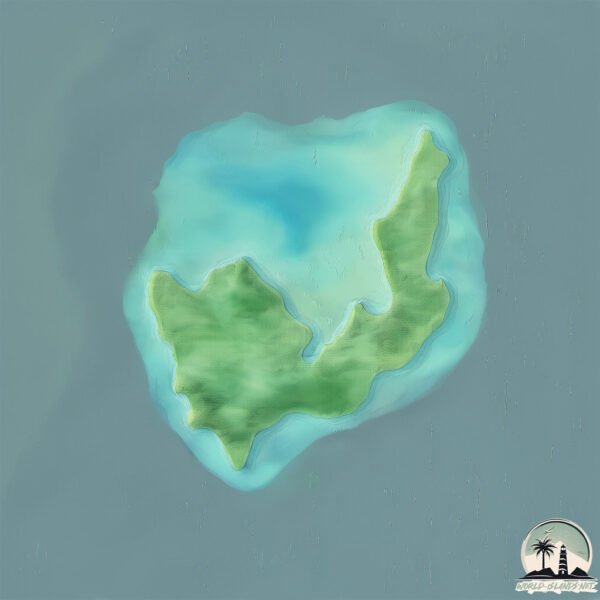Pulau Kaitanimbar

Welcome to Pulau Kaitanimbar, a Tropical island in the Banda Sea, part of the majestic Pacific Ocean. This guide offers a comprehensive overview of what makes Pulau Kaitanimbar unique – from its geography and climate to its population, infrastructure, and beyond. Dive into the details:
- Geography and Size: Explore the island’s size and location.
- Climate and Weather: Weather patterns and temperature.
- Topography and Nature: Uncover the natural wonders of the island.
- Infrastructure and Travelling: Insights on reaching, staying, and making the most of your visit.
- News and Headlines: Latest News.
Geography and size of Pulau Kaitanimbar
Size: 10.2 km²
Coastline: 21.9 km
Ocean: Pacific Ocean
Sea: Banda Sea
Continent: Oceania
Pulau Kaitanimbar is a Medium Island spanning 10 km² with a coastline of 22 km.
Archipel: Melanesia – A subregion of Oceania in the southwestern Pacific Ocean, including countries like Fiji, Solomon Islands, and Vanuatu, known for their diverse cultures and languages.
Tectonic Plate: Africa – One of the world’s largest tectonic plates, covering the African continent and parts of the surrounding oceans, known for its stability with some active rift zones.
The geographic heart of the island is pinpointed at these coordinates:
Latitude: -6.01795238 / Longitude: 132.44968838
Climate and weather of Pulau Kaitanimbar
Climate Zone: Tropical
Climate Details: Tropical Monsoon Climate
Temperature: Hot
Climate Characteristics: Characterized by heavy rainfall, high humidity, and uniformly high temperatures, but with a distinct short dry season. It features a seasonal reversal of prevailing wind directions.
Topography and nature of Pulau Kaitanimbar
Timezone: UTC+09:00
Timezone places: Asia/Tokyo
Max. Elevation: 36 m
Mean Elevation: 15 m
Vegetation: Evergreen Broadleaf Forest
Tree Coverage: 74%
The mean elevation is 15 m. The highest elevation on the island reaches approximately 36 meters above sea level. The island is characterized by Plains: Flat, low-lying lands characterized by a maximum elevation of up to 200 meters. On islands, plains are typically coastal lowlands or central flat areas.
Dominating Vegetation: Evergreen Broadleaf Forest
Characterized by dense, lush canopies of broadleaf trees that retain their leaves year-round. These forests are typically found in tropical and subtropical regions and are known for their high biodiversity. Pulau Kaitanimbar has a tree cover of 74 %.
Vegetation: 8 vegetation zones – Very Highly Diverse Island
Islands in this range are ecological powerhouses, showcasing a wide array of vegetation zones. Each zone, from lush rainforests to arid scrublands, coastal mangroves to mountainous regions, contributes to a complex and interdependent ecosystem. These islands are often hotspots of biodiversity, supporting numerous species and intricate ecological processes.
Infrastructure and Travelling to Pulau Kaitanimbar
Does the island have a public airport? no.
There is no public and scheduled airport on Pulau Kaitanimbar. The nearest airport is Karel Sadsuitubun Airport, located 41 km away.
Does the island have a major port? no.
There are no major ports on Pulau Kaitanimbar. The closest major port is SAUMLAKI, approximately 251 km away.
The mean population of Pulau Kaitanimbar is 71 per km². Pulau Kaitanimbar is Gently Populated. The island belongs to Indonesia.
Continuing your journey, Kai Kecil is the next notable island, situated merely km away.
Indonesia is classified as Emerging region: MIKT: Mexico, Indonesia, South Korea, and Turkey – Economies recognized for their development potential and emerging market status. The level of income is Lower middle income.
News – Latest Updates and Headlines from Pulau Kaitanimbar
Stay informed with the most recent news and important headlines from Pulau Kaitanimbar. Here’s a roundup of the latest developments.
Please note: The data used here has been primarily extracted from satellite readings. Deviations from exact values may occur, particularly regarding the height of elevations and population density. Land area and coastline measurements refer to average values at mean high tide.
